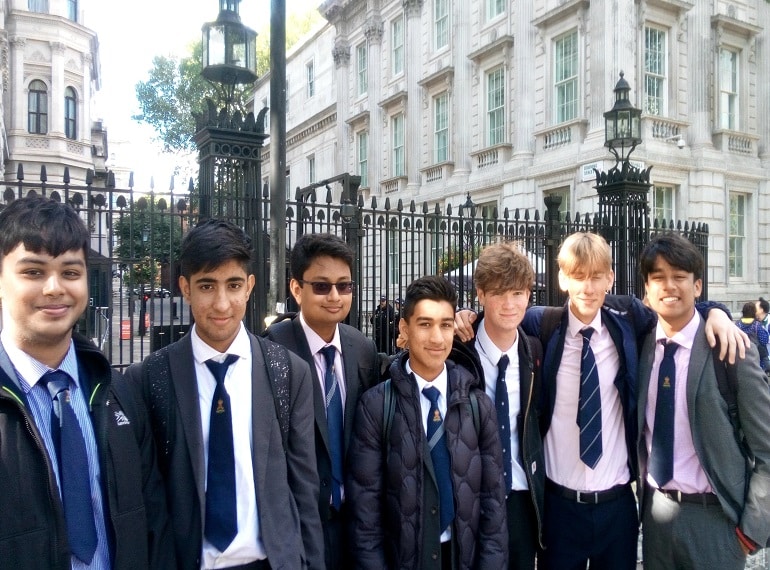
A-level Politics students had the chance to see the reality behind their textbooks on a trip to the Houses of Parliament.
Their visit gave them a vivid experience of Westminster life inside and outside the House of Commons chamber, including the opportunity to see leading politicians at first-hand, to watch demonstrations by campaigners on both sides of the Brexit divide and to observe lobbying by former employees of Thomas Cook.
And during an education workshop, the Year 12 boys also had a chance to try their own hand at law-making.
Politics teacher Liam Hargadon, who organised the trip, said: “We have been living through turbulent times, with greatly increased public attention to developments. Much has been said about how important the views of young people should be. It’s vital they understand the opportunities to make their voices heard.”
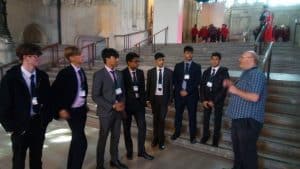 The weekday visit provided boys with the opportunity to tour the Central Lobby and committee rooms, as well as the public gallery of the House of Commons.
The weekday visit provided boys with the opportunity to tour the Central Lobby and committee rooms, as well as the public gallery of the House of Commons.
“We saw Theresa May make her first speech in parliament since standing down as PM, talking about legislation to limit abuses within families.”
Others in the Commons chamber included outgoing Speaker John Bercow and Dr Liam Fox, Secretary of State for International Trade until July this year, while among those the boys saw in the precincts of the Palace of Westminster were former Chancellor Philip Hammond and former Labour Cabinet Minister Lord (Peter) Hain.
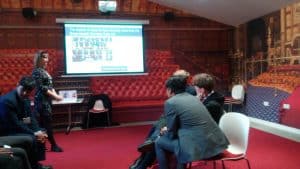 “The reality of Parliament was on show to the boys; outside Parliament, both sides in the Brexit debate were seeking to make their presence felt. In addition, about 50 members of staff from the recently crashed Thomas Cook travel firm were seeking to lobby MPs,” said Mr Hargadon.
“The reality of Parliament was on show to the boys; outside Parliament, both sides in the Brexit debate were seeking to make their presence felt. In addition, about 50 members of staff from the recently crashed Thomas Cook travel firm were seeking to lobby MPs,” said Mr Hargadon.
In the workshop, the boys were given the chance to propose a law. They suggested a bigger police presence in schools, partly to provide greater re-assurance and security, but also to help break down barriers between police and young people.
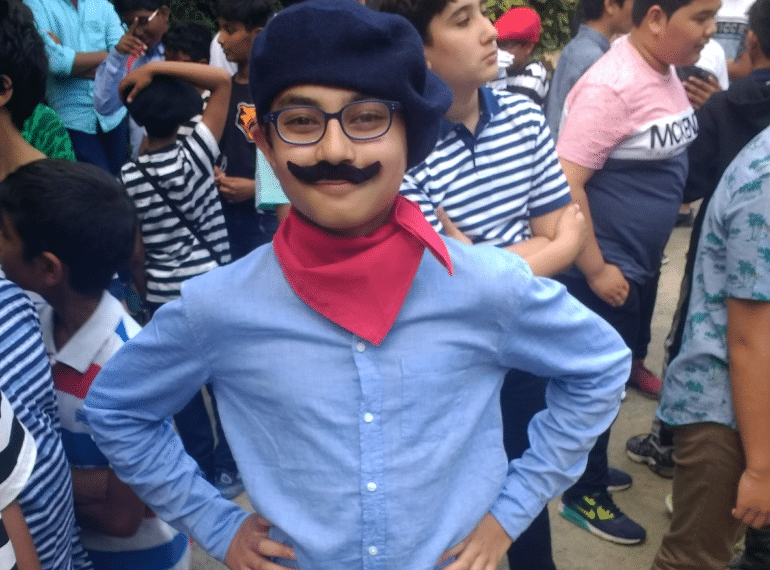
 Forty of last year’s Year 7 pupils enjoyed a range of fun activities at the Château de la Baudonnière, near Avranches, with all the instructions for these – and for mealtimes – given in French.
Forty of last year’s Year 7 pupils enjoyed a range of fun activities at the Château de la Baudonnière, near Avranches, with all the instructions for these – and for mealtimes – given in French.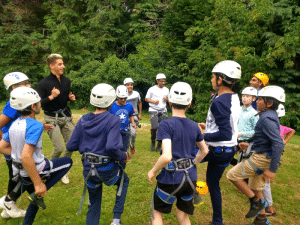 Languages teacher Rebecca Grundy said: “We aim for a completely immersive experience to give the boys some intensive help with their language-learning, while making sure they learn something of the culture and history of Normandy and France.”
Languages teacher Rebecca Grundy said: “We aim for a completely immersive experience to give the boys some intensive help with their language-learning, while making sure they learn something of the culture and history of Normandy and France.”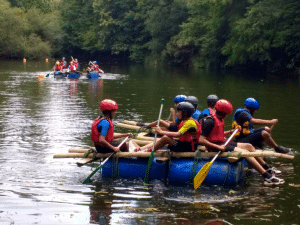 On a day out, the younger boys visited two Norman cities of historical importance, Arromanches and Bayeux.
On a day out, the younger boys visited two Norman cities of historical importance, Arromanches and Bayeux.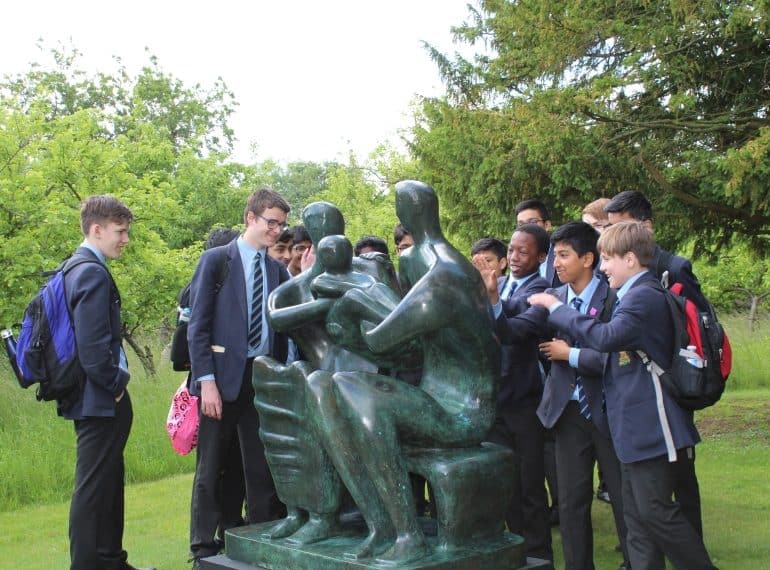
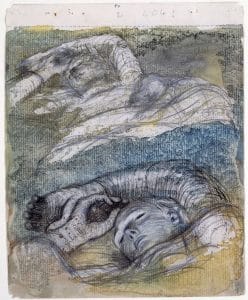 Not only did the Art trip give the pupils an opportunity to experience his spectacular outdoor sculptures in the beautiful grounds near Much Hadham, but they were also able to see the largest exhibition of his drawings in more than 40 years.
Not only did the Art trip give the pupils an opportunity to experience his spectacular outdoor sculptures in the beautiful grounds near Much Hadham, but they were also able to see the largest exhibition of his drawings in more than 40 years.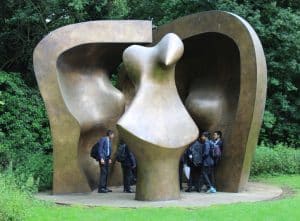 “The foundation displays a fantastic collection of his sculptural work. The students were taken on a tour of the grounds by informative guides who described the inspiration and construction behind these iconic pieces,” said Mrs McAteer.
“The foundation displays a fantastic collection of his sculptural work. The students were taken on a tour of the grounds by informative guides who described the inspiration and construction behind these iconic pieces,” said Mrs McAteer.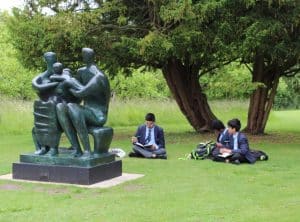 The trip began with a tour of Moore’s larger sculptures, before the group ventured inside his numerous workshops to look at his smaller, finer work. Here, said Sai, they picked up tips for improving their own sculpting, such as incorporating the appearance of bones and using textures inspired by nature, such as bark.
The trip began with a tour of Moore’s larger sculptures, before the group ventured inside his numerous workshops to look at his smaller, finer work. Here, said Sai, they picked up tips for improving their own sculpting, such as incorporating the appearance of bones and using textures inspired by nature, such as bark.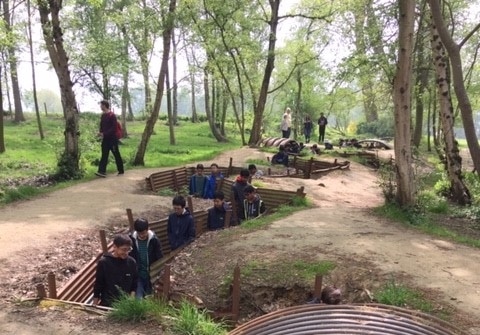
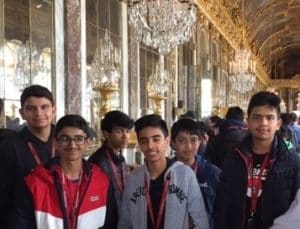 Head of History Helen MacGregor said the extra visit proved popular with the boys, for whom the whole trip was organised to fit in with Year 9’s History theme about the changing nature of warfare and to explore the links between World War I and World War II.
Head of History Helen MacGregor said the extra visit proved popular with the boys, for whom the whole trip was organised to fit in with Year 9’s History theme about the changing nature of warfare and to explore the links between World War I and World War II. This was followed by a tour of Tyne Cot Commonwealth War Graves Cemetery, where the boys searched out the names of Old Elizabethans who fought and died in the First World War. They included Jack Field, who had been the School Captain and was just 19 when he was killed. In the evening, the pupils watched the daily Menin Gate remembrance ceremony, which was first performed in 1928. Every evening, the busy road through the memorial arch is closed and The Last Post is played.
This was followed by a tour of Tyne Cot Commonwealth War Graves Cemetery, where the boys searched out the names of Old Elizabethans who fought and died in the First World War. They included Jack Field, who had been the School Captain and was just 19 when he was killed. In the evening, the pupils watched the daily Menin Gate remembrance ceremony, which was first performed in 1928. Every evening, the busy road through the memorial arch is closed and The Last Post is played.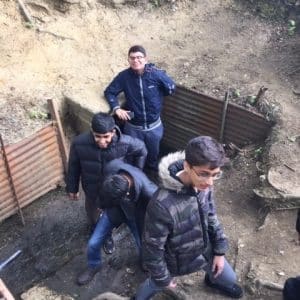 Miss MacGregor said: “The boys were clearly moved by the ceremony and took the time to remember the war dead, including the Sikh regiment who are commemorated there.”
Miss MacGregor said: “The boys were clearly moved by the ceremony and took the time to remember the war dead, including the Sikh regiment who are commemorated there.”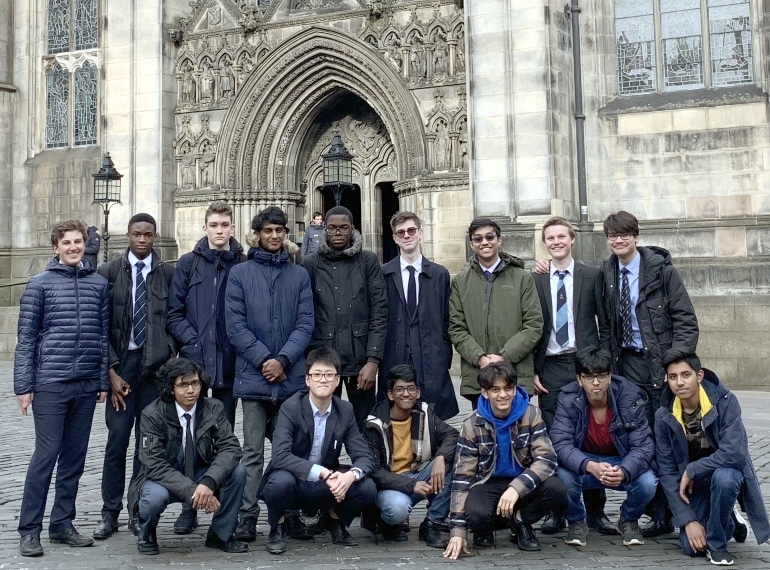
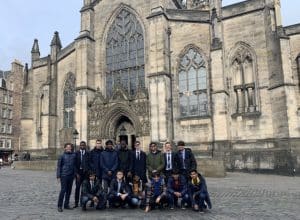 The team reached the competition’s national final after winning their regional round. The event was held this year in the Court of Session – Scotland’s supreme civil court – in Edinburgh’s historic Old Town.
The team reached the competition’s national final after winning their regional round. The event was held this year in the Court of Session – Scotland’s supreme civil court – in Edinburgh’s historic Old Town.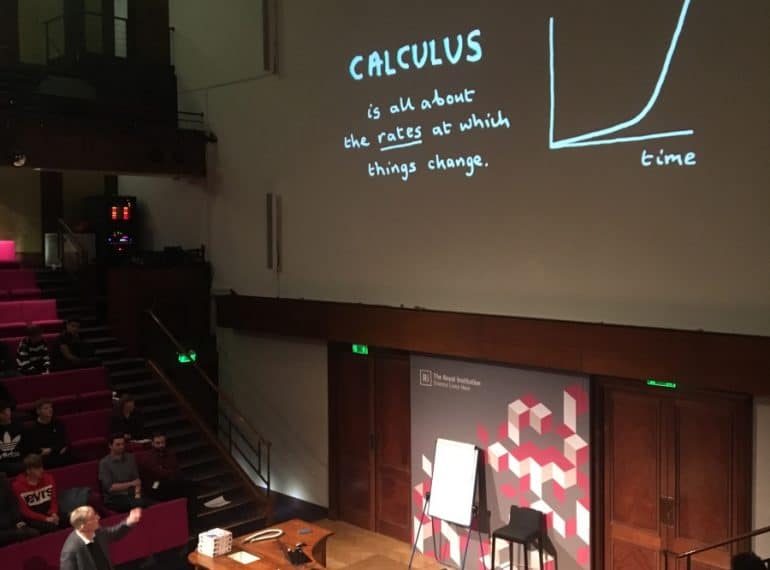
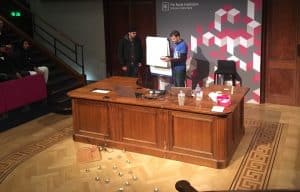 The Year 12 pupils headed off to the Royal Institution in central London for Maths Fest 2019 – a Mathematics festival for schools designed to inculcate a passion for the subject among young people. The event is the brainchild of mathematicians and speakers Matt Parker and Rob Eastaway.
The Year 12 pupils headed off to the Royal Institution in central London for Maths Fest 2019 – a Mathematics festival for schools designed to inculcate a passion for the subject among young people. The event is the brainchild of mathematicians and speakers Matt Parker and Rob Eastaway.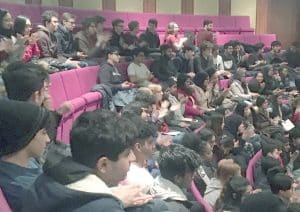 Science presenter Steve Mould then showed the audience 2D and 3D shapes of constant width that are not circles or spheres, before somewhat precariously riding a skateboard to demonstrate how easily he could slide along with these unique shapes. His most famous discovery is “self-siphoning beads”; a string of metal beads strung together on a chain, which, when released from its container, seems to defy gravity and move upwards before falling to the ground.
Science presenter Steve Mould then showed the audience 2D and 3D shapes of constant width that are not circles or spheres, before somewhat precariously riding a skateboard to demonstrate how easily he could slide along with these unique shapes. His most famous discovery is “self-siphoning beads”; a string of metal beads strung together on a chain, which, when released from its container, seems to defy gravity and move upwards before falling to the ground.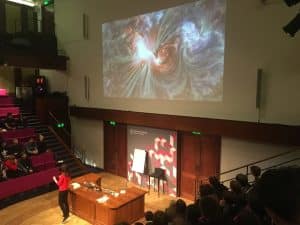 Astronomer Lucie Green discussed the sun – Ishveer Sanghera commented that he particularly enjoyed her application of Mathematics to the solar system, including calculating how much longer the sun would burn for.
Astronomer Lucie Green discussed the sun – Ishveer Sanghera commented that he particularly enjoyed her application of Mathematics to the solar system, including calculating how much longer the sun would burn for.